#salt marsh caterpillar
Explore tagged Tumblr posts
Text



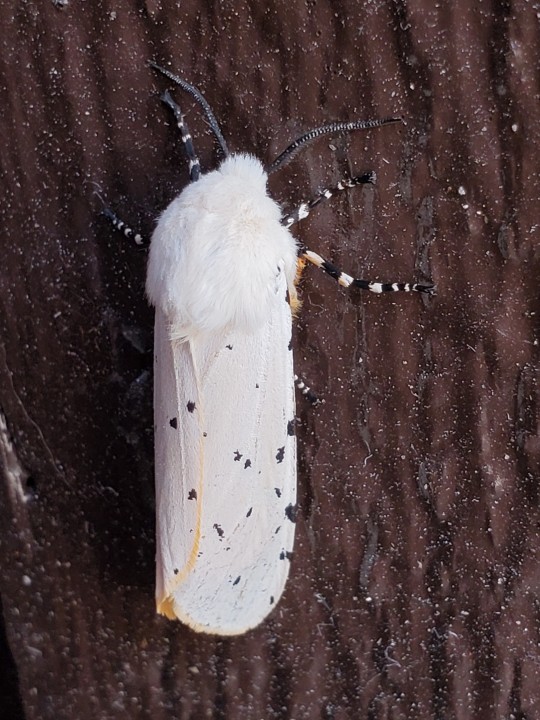

Salt marsh moth 》 Estigmene acrea
I thought for sure I had posted the moth pics here before, but I can't find the post.
Either way, salt marsh moths are so cute! Their caterpillars.... maybe not quite as cute. 😅
I've always had an aversion to hairy caterpillars but I'm trying to work on that. His little face munching on a clover is very cute, but something about his hair makes me recoil.
Southeast Texas, 5 Mar. 2024 (moth), 12 April 2024 (caterpillar)
#moth#salt marsh moth#caterpillar species#caterpillar#moth species#salt marsh caterpillar#hairy caterpillar#moths of texas#moths#caterpillars#caterpillars of texas#wildlife#clover#amatuer mycology#mushrooms#mycology#fungi#mushroom hunting#mushrooms of texas#texas mushrooms#wild fungi#fungi of texas#fungarium#species identification#special interest#goblincore#nature photography#nature
14 notes
·
View notes
Text
Salt Marsh Moth | Caterpillar #shorts #caterpillar #cutecritters #bytesizeambs
youtube
Found another Salt Marsh Moth Caterpillar (Acrea Moth Caterpillar) while we were riding our bikes a few weeks ago. This little cutie was going pretty fast! They're nonvenomous to humans and do not bite or sting.
NOTE: Information on Salt Marsh Moth Caterpillars will be in the description of this YouTube short.
*Quality is better when viewed via YouTube.
#bytesizeambs#youtube#youtube shorts#shorts#bytesizeambs shorts#nature#cute critters#biking adventures#biking#caterpillar#cute caterpillar#salt marsh moth#salt marsh caterpillar#salt marsh moth caterpillar#caterpillars#nonvenomous caterpillar#cute fuzzy caterpillar#black and brown caterpillar#acrea moth caterpillar
4 notes
·
View notes
Text



Salt marsh caterpillar. In the first picture you can see the small white dots down its side that help identify it. Soon it will cocoon for the winter!
0 notes
Text
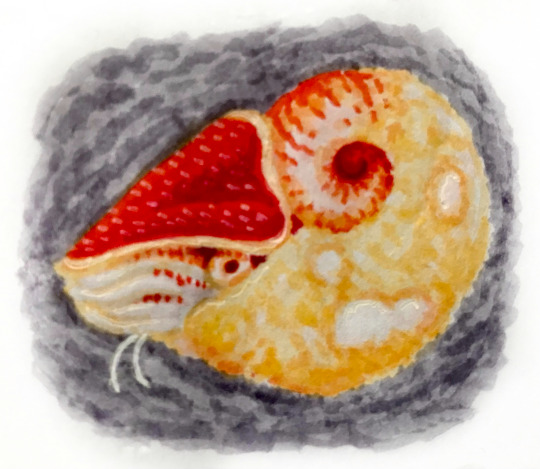




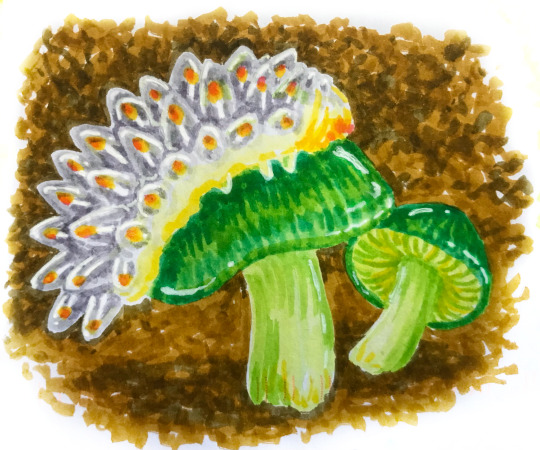
#fuzzy golden nautilus#nautilus#giant African millipede#millipede#Bayer’s scarab beetle#scarab beetle#Oak treehopper#treehopper#salt marsh moth#moths#jewel caterpillar#marker art#art by me
83 notes
·
View notes
Text
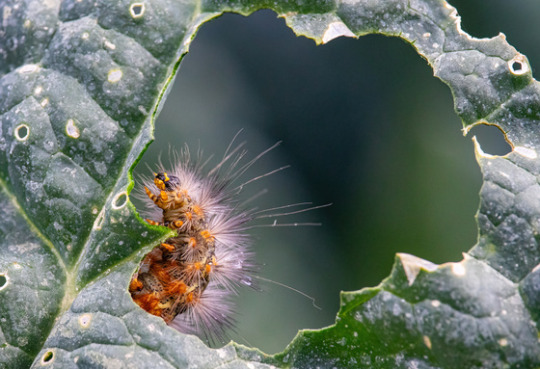
Fast Eater
Salt Marsh Moth Caterpillar eating a cabbage leaf.
Taken By Amanda Nelson
#amanda nelson#photographer#salt marsh moth caterpillar#moth#caterpillar#cabbage leaf#nature#insect#canadian geographic
14 notes
·
View notes
Text
Fuzzy Butt update 2:


Found a new better and most importantly BIGGER cage for them to stay in which will arrive soon. It has promising reviews from those who raise butterflies.
We also brought some extra fresh leaves, clovers, and cherries for them to eat. They really liked the cherries and ate them all night!
They're also starting to produce silk for their future cocoon so we're getting the place nice and ready for their slumber :]
#entomology#zoology#butterfly#butterfly raising#pet bugs#moth#moths#salt marsh moth#caterpillar#bug keeping#bugs of tumblr#fuzzy butt#animal lover#updates
3 notes
·
View notes
Text
Caterpillar in Falmouth 09/28/23
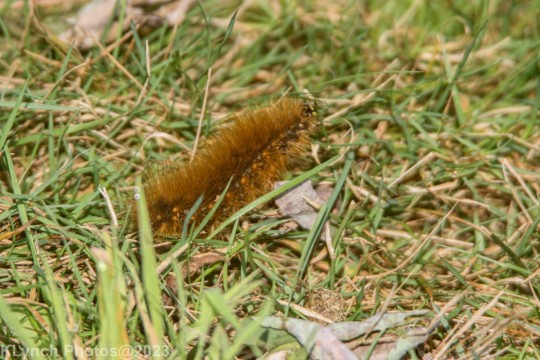
View On WordPress
1 note
·
View note
Text

Name: Swirlypod
Debut: Super Mario Bros. Wonder
YIPPEE YAHOO! A brand swirlin' new snail fresh for 2023! It has been quite a long time now since we've gotten a new Mario snail, and even since I've posted about one, since I covered all the snailiest Mario snails a while ago. But lookie here! Snaily snaily snail for me to see and for you to view!
Swirlypod is so delightful! To get this out of the way first, yes, its eyes are not on the ends of stalks. Yes, this is good and okay. Some snails are like that! Especially freshwater snails. And that's the kind of snail that this snail seems to be! While sometimes seen on land, it is also seen emerging from (poisonous) swamps. It can breathe that!
Swirlypod's face is just so, so precious. Its big, innocent, curious eyes experiencing the world in the way only a snail could! Its big ol' bulbous antennae, more bulbous than they have any right being, more like a nudibranch's than a normal snail's! And its mouth! I think that's its mouth? It's like three scrumbly tentacles ready to scrumble down some delicious fungus!
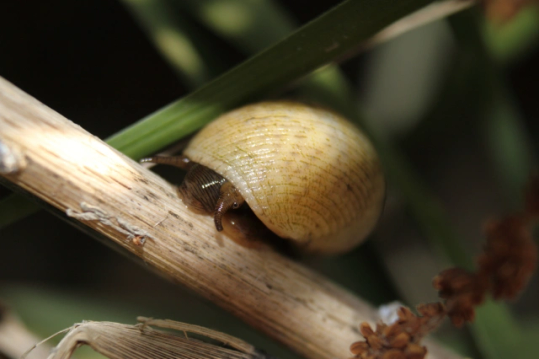
Did you know that the salt marsh snail Littoraria irrorata is able to FARM fungus? They damage marsh grasses to create large wounds for fungus to grow in, and even use their own poop as fertilizer! Snails can FARM!
Yes, indeed, what a wonderful snail we have here! Thank you, Super Mario Bros. Wonder!

...Hey! That shell comes right off! Now it's all Pod, with no Swirly! Does this mean Lime is The Impostor? I may have just asked you, but that was rhetorical. Don't ask me, because I don't know! Removable shells are a common ability for cartoon snails, and of course, the turtles of this world also have removable shells. I think it doesn't really mean much at all! Though, the idea of a "hermit slug" is very amusing. A snail who can't be bothered to grow its own shell. Maybe it wants to switch shells for different styles sometimes. A slow victim of fast fashion!
Wonder is one of those games where Koopa Troopas retreat into their shells when stomped, so Swirlypod is sort of a way to have Beach Koopa in the same game as the more standardly-behaving Koopa! Once it gets back on its foot, it will try to squirm back into a shell, if one is available. You can give it back! Just drop it down at your feet, and Swirlypod will have a home once more!
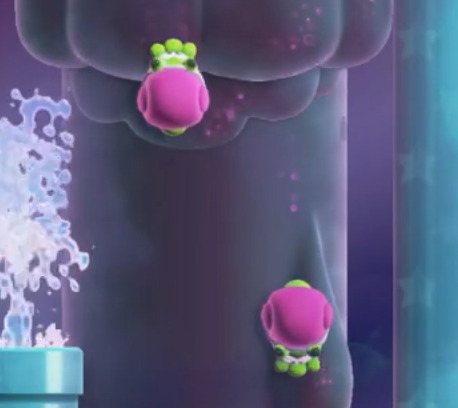
Another thing that sets Swirlypods apart from Koopas is that they are sticky slimy and can slither up and down vertical surfaces! Just like in real life! They don't only climb on the left and right sides of surfaces, either. They can even go on the surface facing the screen! Not just anyone is allowed to do that!
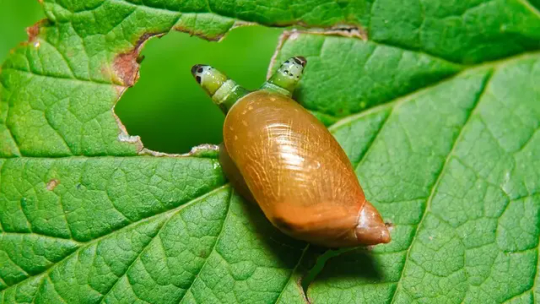
I am saving what may be the best tidbit for last! There is a good chance Swirlypod's bulbous antennae look familiar to you. That's because they look just like Leucochloridium paradoxum, the green-banded broodsac, everyone's favorite snail parasite! The flatworm that inhabits a snail's eyestalks, making them look more like caterpillars to get a bird to eat them so they can continue their life cycle! Swirlypod definitely isn't supposed to be like, ACTUALLY infected by this funny worm, but I think the resemblance is very much intentional, between the shape and coloring. And that is so awesome to see! This isn't even meant to be a scary snail or anything, but they represented a freaky parasite anyway!
547 notes
·
View notes
Note

Would it be possible to get an ID on this guy? Spotted in San Diego, California, USA. My guess is it's a salt marsh moth caterpillar
Caterpillar ID - CA, USA:
Yes you are correct! Estigmene acrea, family Erebidae.
Salt Marsh Moth (Estigmene acrea) · iNaturalist
114 notes
·
View notes
Text
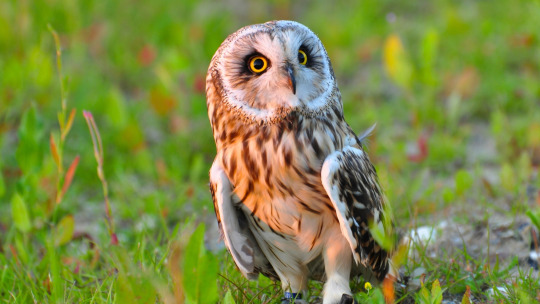

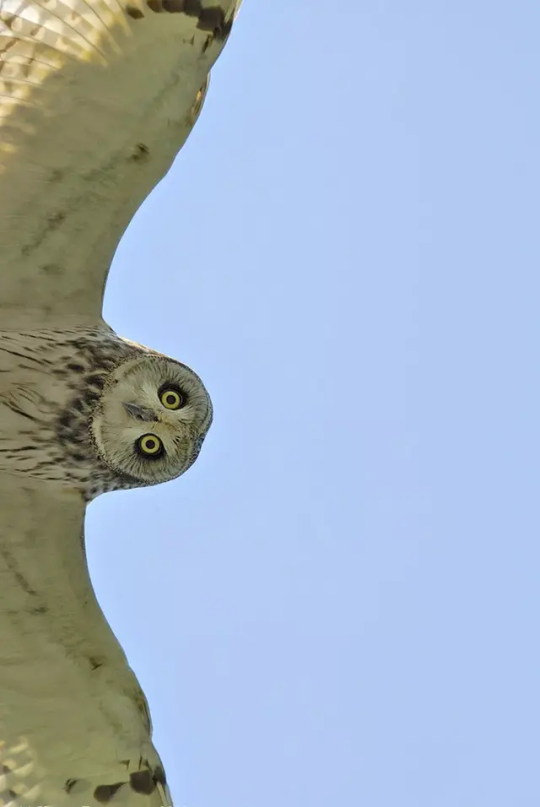
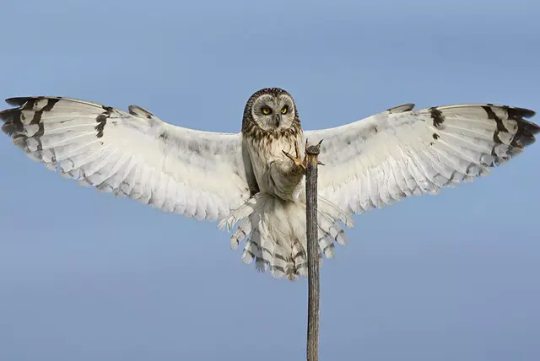

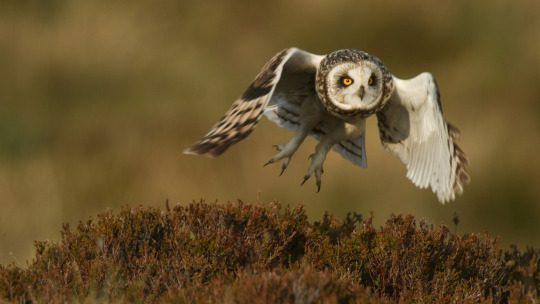
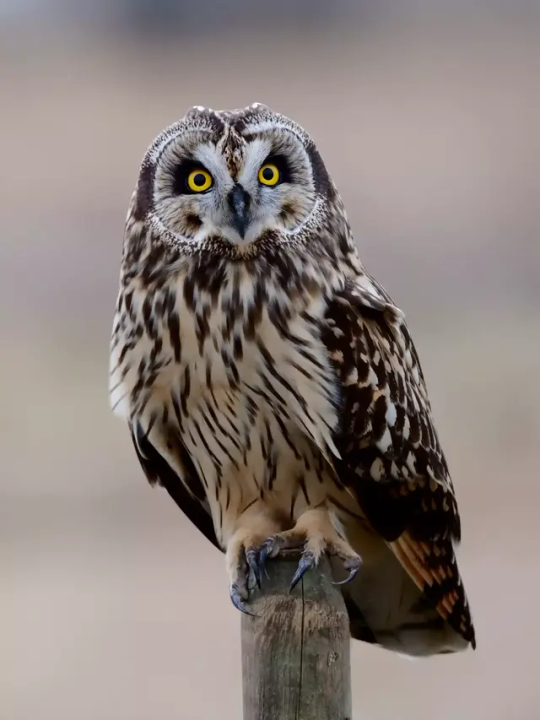
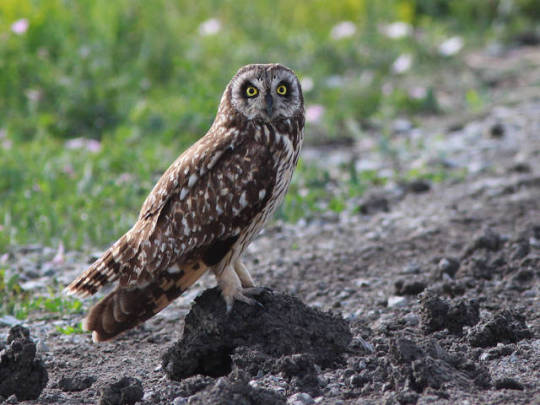

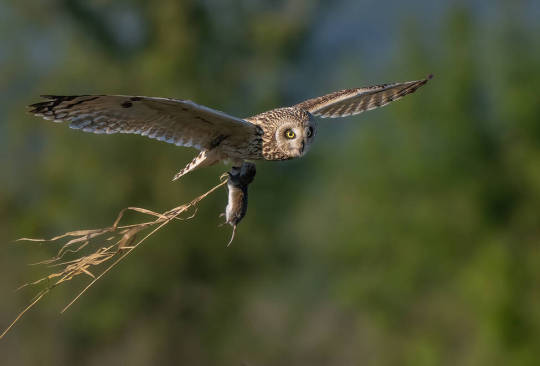
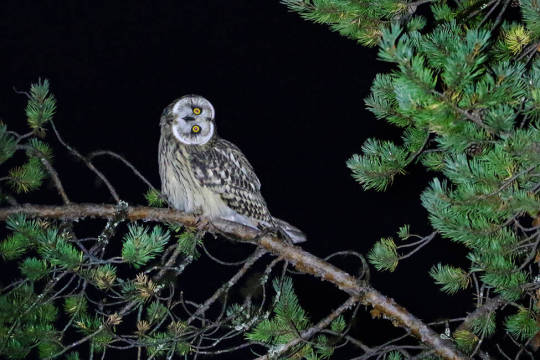

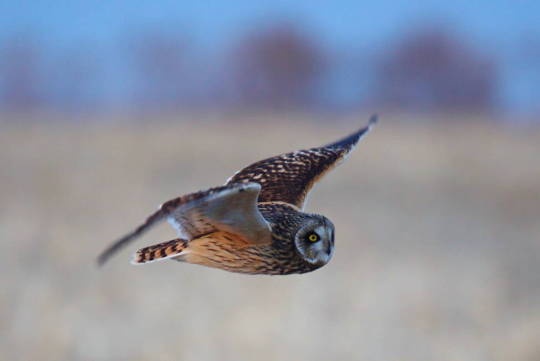

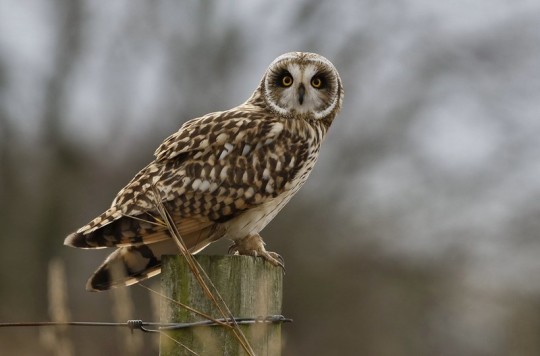
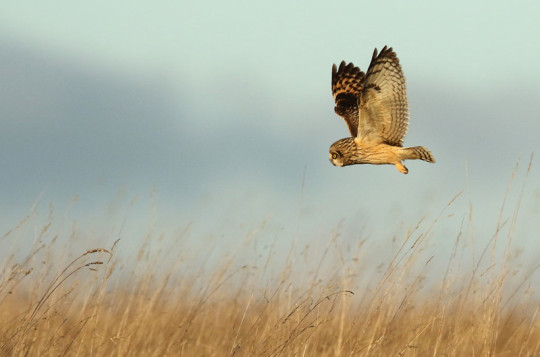


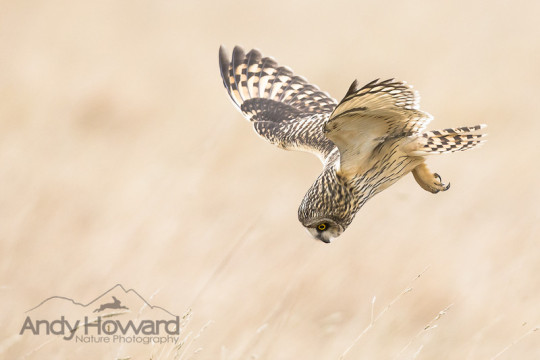
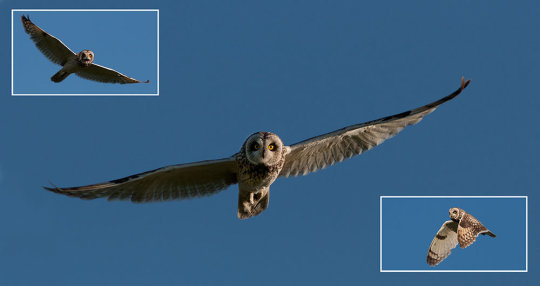

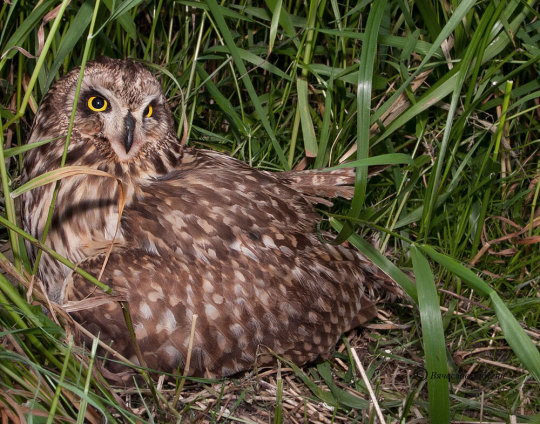



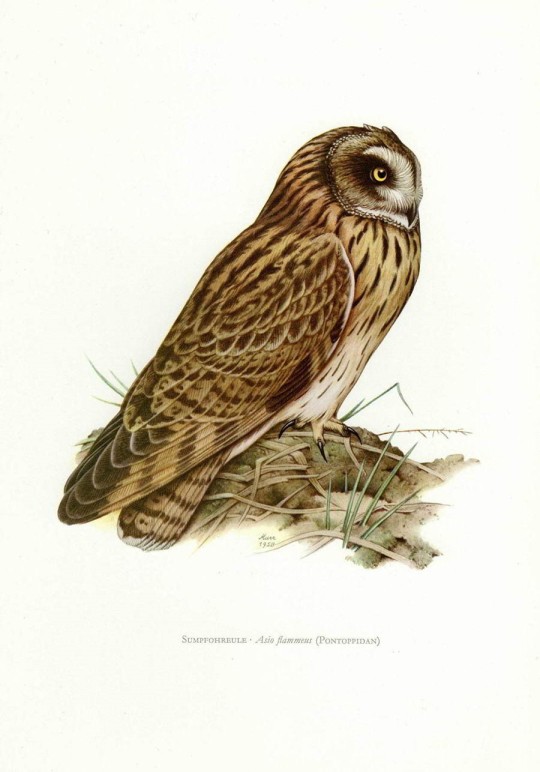
Болотная сова (Asio flammeus) – среднего размера сова: длина ее тела колеблется от 34 до 42 см, вес самцов - 0,23-0,39 кг, самок - 0,24-0,43 кг. Крылья у нее длинные, ноги украшены пучками из перьев, на голове расположены маленькие вертикально стоящие "ушки" из перьев.
Болотная сова распространена очень широко, она обитает на всех континентах, кроме Австралии и Антарктики и населяет соленоводные болота, прибрежные равнины, хвойные леса, тундру, трясины, поля, прерии, высокотравные степи (часто с солончаками), луга (в поймах рек и озер), гористые местности и субальпийские луга, сельскохозяйственные угодья и парковые насаждения. Во всех местах обитания болотная сова придерживается открытых пространств.
Большую часть рациона этой птицы составляют мелкие грызуны (мыши, полёвки, лемминги, крысы, хомяки и ондатры), кролики, землеройки, летучие мыши, птицы (кулики, крачки, мелкие чайки, жаворонки и дрозды), насекомые (кузнечики, жуки, гусеницы) и иногда рыба.
Охотится болотная сова в любое время суток, низко паря над открытым пространством. На добычу она обычно нападает с полета или из засады и несёт ее в когтях. Болотные совы – моногамы и образуют постоянные пары. Самец привлекает самку на свой участок красивыми пируэтами в воздухе. Иногда в брачных полетах участвуют обе птицы: они гоняются друг за другом, сцепляются когтями или в шутку борются. Гнездом обычно служит расчищенная самкой ямка диаметром до 40 см на вершине плоской кочки среди густой травы или тростника. В кладке 4–7 яиц, которые насиживает самка.
Swamp Owl (Asio flammeus) – medium-sized owl: its body length ranges from 34 to 42 cm, the weight of males is 0.23-0.39 kg, females - 0.24-0.43 kg. Her wings are long, her legs are decorated with tufts of feathers, and small vertically standing "ears" of feathers are located on her head.
The is very widespread, it lives on all continents except Australia and Antarctica and inhabits saltwater swamps, coastal plains, coniferous forests, tundra, bogs, fields, prairies, tall grass steppes (often with salt marshes), meadows (in floodplains of rivers and lakes), mountainous areas and subalpine meadows, agricultural lands and parkland. In all habitats, the swamp owl adheres to open spaces.
Most of the diet of this bird consists of small rodents (mice, voles, lemmings, rats, hamsters and muskrats), rabbits, shrews, bats, birds (sandpipers, terns, small gulls, larks and thrushes), insects (grasshoppers, beetles, caterpillars) and sometimes fish.
The swamp owl hunts at any time of the day, hovering low over an open space. It usually attacks prey from flight or from ambush and carries it in its claws. Swamp owls are monogamous and form permanent pairs. The male attracts the female to his site with beautiful pirouettes in the air. Sometimes both birds participate in mating flights: they chase each other, lock claws or jokingly fight. The nest is usually a hole cleared by a female with a diameter of up to 40 cm on top of a flat hummock among dense grass or reeds. There are 4-7 eggs in the clutch, which are incubated by the female.
Источник://www.ebirds.ru/vid/225.htm,/bigenc.ru/c/bolotnaia-sova-bb9577,/zoogalaktika.ru/photos/aves/strigiformes/asio-flammeus, //www.mos.ru/news/item/86280073/,://ecology.polotsk.museum.by/node/42982,/russia.birding.day/v2taxon.php?s=423&l=ru.
#nature#nature aesthetic#bird photography#birds video#owl#swamp owl#asio flammeus#night photos#birds art#природа#фотографии птиц#видео птиц#сова#болотная сова#природнаякрасота#ночные фото#птицы арт
208 notes
·
View notes
Text
Salt Marsh Moth Caterpillar | Cute Caterpillar #shorts #bytesizeambs #caterpillar #cutecritters
This cute and wiggly little guy was hard to find the species of. I believe it to be a Salt Marsh Moth Caterpillar. However, there are a few similar.... Nevada Tiger Moth Caterpillar and Garden Tiger Moth Caterpillar. It does have some characteristics of a Tiger Moth Caterpillar but it's also missing some ID markers as well. Hopefully it is named correctly here, as the Salt Marsh Moth Caterpillar.
#bytesizeambs#youtube#youtube shorts#shorts#bytesizeambs shorts#nature#hiking adventures#cute critters#caterpillar#salt marsh moth caterpillar#salt marsh moth#cute caterpillar#nevada tiger moth caterpillar#garden tiger moth#garden tiger moth caterpillar
2 notes
·
View notes
Text
Moth of the Week
Salt Marsh Moth
Estigmene acrea
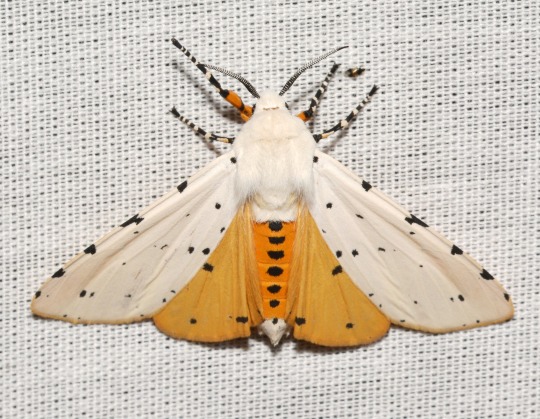
The salt marsh moth is a part of the family Erebidae. This species was first described in 1773 by Dru Drury. It is also known as the acrea moth.
Description Both male and female moths have white heads, thoraxes, and forewings with a varying pattern of black spots on the forewings, with some moths having no pattern at all. They also share an orange-yellow abdomen with a vertical line of back dots. On the male, the hindwings are the same organge yellow while on females the hindwings are white. Both males and females have three or four black dots on each hindwing.
Wingspan Range: 4.5 - 6.8 cm (≈1.77 - 2.68 in)
Diet and Habitat The caterpillar was first thought to be a pest to salt-grass, but in fact it prefers weeds, vegetables, and field crops such as dandelions, cabbage, cotton, walnuts, apple, tobacco, pea, potato, clovers, and maize. Adults do not feed.
This moth is found in North America, the Democratic Republic of the Congo, Kenya, Colombia, and Mexico. It prefers open habitats such as openings in woods, thickets, farm fields, grasslands, and marshes. It is called the “salt marsh moth” because it is common in coastal salt marshes (tidal marshes) along Pacific, Atlantic, and Gulf coasts.
Mating This species of moth does not emit pheromones from the tip of its abdomen but instead from its throat or the to of its abdomen. These moths are seen from May to August but can be seen all year in southern Florida and Texas. It is presumably during May and August they mate in most parts of their range while they mate all year round in Florida and Texas.
Yellowish eggs are laid in clusters on the host plant leaves. Females usually produce 400 to 1000 eggs in one or more clusters. It is possible to find a single egg cluster containing 1200 eggs. Eggs hatch in four to five days.
Predators This species is frequently parasitized as larvae, usually by flies in the Tachinidae family. In Arizona, the most common parasites were Exorista mellea and Leschenaultia adusta while two other parasitic flies were also seen: Gymnocarcelia ricinorum and Lespesia archippivora.
Both the larval and egg stages are oararzitized by Hymenopteran parasitoids such as Apanteles diacrisiae; Therion fuscipenne, T. morio, Casinaria genuina, Hyposoter rivalis; Psychophagus omnivorus, Tritneptis hemerocampae Vierick; Anastatus reduvii; and Trichogramma semifumatum.
A cytoplasmic polyhedrosis virus is known to harm this species but there are little data on its importance and effect.
General predators such as lady beetles, softwinged flower beetles, and assassin bugs prey on these caterpillars, but are not thought to have a large impact on population.
Fun Fact This species has 4 subspecies: Estigmene acrea acrea, Estigmene acrea arizonensis (Rothschild, (1910)) (Arizona), Estigmene acrea mexicana (Walker, (1865)) (Mexico), Estigmene acrea columbiana (Rothschild, (1910)) (Colombia).
(Source: Wikipedia, University of Florida, Missouri Department of Conservation)
#libraryofmoths#animals#bugs#facts#insects#moth#lepidoptera#mothoftheweek#Erebidae#salt marsh moth#Estigmene acrea
400 notes
·
View notes
Text
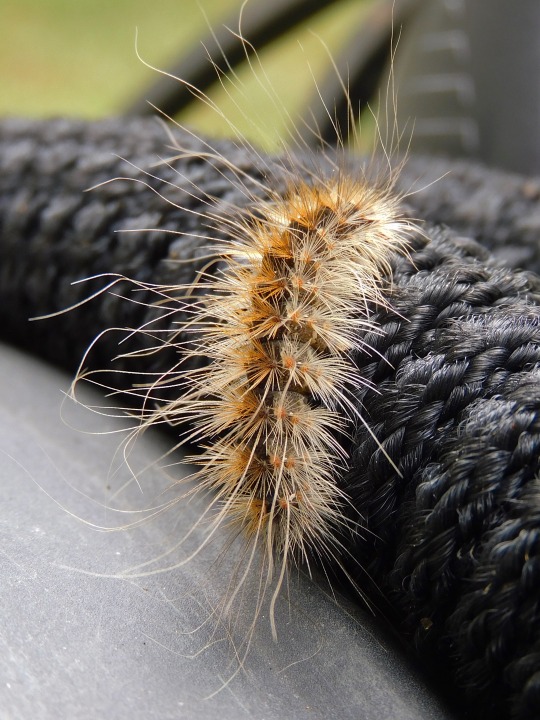


Some Moth caterpillar, just possibly a Salt Marsh Moth (Estigmene acrea). This one I am not at all sure of, but it's still pretty.
#nature#my photography#backyard nature#moth#caterpillar#nature photography#insects#wildlife photography
26 notes
·
View notes
Note

I saw this caterpillar today and thought of you!
awe that’s so sweet!! what a lovely fuzzy little guy
looks like it might be estigmene acrea, salt marsh moth caterpillar 🐛
5 notes
·
View notes
Text


salt marsh moth caterpillar in tasteful raindrop suit
1 note
·
View note
Text
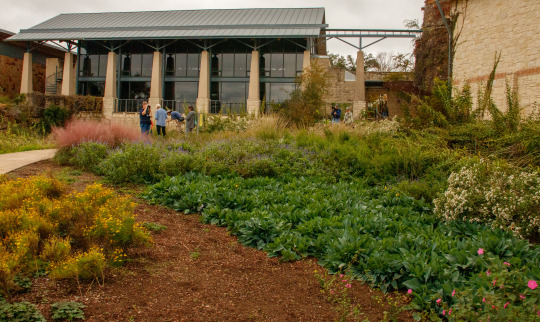
”Insects All Around Us” by Digital Edital Editor Kit O'Connell, originally published in the January/February 2024 issue of Texas Observer magazine:
Photography and additional reporting by Fall 2023 Reporting Fellow Paula Levihn-Coon.
The prey is already dying when the hunters arrive.
The sky is dark gray, the air thick with the threat of rain. But that hasn’t stopped over a dozen from gathering. They’re mostly, but not exclusively, older folks—frequently retirees with the ability to take a weekday morning off—and they’re armed with Digital SLR cameras and macro lenses.
Valerie Bugh crouches down over the squirming spots on the stone of the shady courtyard entrance to the Lady Bird Johnson Wildflower Center, prodding at the poisoned insects. Bugh, a gray-haired local naturalist, isn’t responsible for the state of these southern yellowjackets (Vespula squamosa), but she’ll take advantage of it for a photo opportunity. Someone on staff at the center discovered their nest and sprayed them just before the bug hunters arrived, and the entire hive is trickling out from their hidden home in a low rock wall. Bugh warns me to keep my distance from the females, who have fatter-looking bodies with stingers compared to the longer, thinner males, which normally only leave the nest for mating purposes. As I take a step back, she fearlessly kneels by their wriggling bodies, picking the males up and focusing her camera on each in turn.
“I’m trying to find one that doesn’t look dead,” she said. Soon, she’d even manage to document the hive’s queen as it haplessly tried to flee the toxins—a rare catch, though a grim beginning for a weekly ritual that largely focuses on the living.
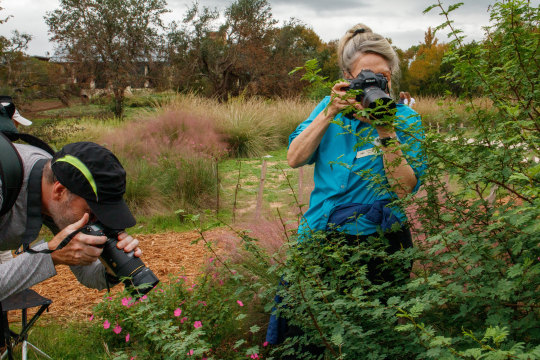
Katherine Daniels and David Cook, volunteers, take insect photos.
Bugh is the author of 10 short fold-out pamphlets with color photos, with titles like Spiders of Texas: A Guide to Common and Notable Species and Unusual Insects of Texas: Caddisflies, Mantides, Lacewings, Walking Sticks, & More. That’s just one of her jobs: She’s also second clarinet in the Austin Opera. She’s modest about these accomplishments when asked—Bugh is too busy searching for bugs to brag about herself.
Every Thursday morning from February through mid-December, Bugh and her team of volunteers in the Lady Bird Johnson Wildflower Center Fauna Project explore a winding path, gradually aiming to cover the entire grounds over the course of a year, in order to inspect more than 650 species of native plants in the gardens and the 50-plus species of oaks in the Texas Arboretum for their occupants.
With this diversity of native plants comes a diversity in insect population too. Allowing for a few pandemic-imposed breaks and schedule changes, Bugh has otherwise been doing this consistently since 2010, during which time she’s identified almost 3,000 species of insect including over 50 bees, 345 flies, and over 500 different beetles. It’s not unusual to find a new species to add to the garden’s known tiny inhabitant list every week.
As Bugh gets moving, other bug hunters follow her in a pack. One by one and in pairs they break off from documenting spiders and beetles found clinging to the brick walls around the entrance and offices of the center. A few volunteer birders are also on-site, but for the most part, they work independently and seem invisible compared to the cheerful, chattering bug hunters. The group also documents signs of larger animals, from mammals to amphibians, but their main focus is on these tiny crawling creatures, since bugs are the most plentiful fauna present both in this garden and worldwide.

Every Thursday from 2010 to the present, Valerie Bugh leads the Fauna Project at the Lady Bird Johnson Wildflower Center in Austin, Texas.
The bug hunters move in a little cluster, calling out when they find something new for Bugh to examine. The salt marsh moth (Estigmene acrea) caterpillars are everywhere.
“If it’s a salt marsh, I don’t want to know about it,” declares Bugh dismissively, though with good humor. Their hairy bodies remind me of an asp, the caterpillar with a nasty sting. But they’re actually harmless to the touch. Bugh is just frustrated because there are too many of them. Unlike other caterpillars, the salt marsh moths will eat almost any plant, building its hairy cocoons all over.
“Every single plant is their host,” Bugh said.
By contrast, the Gulf fritillary (Agraulis vanillae), another caterpillar present in the day’s fauna count, subsists almost entirely on passion flower vines.
Bugh’s disdain for the salt marsh moth doesn’t stop her from plucking one from the greenery and posing for a photo with it. She’s happy to show off and talk about her fauna friends, even the overly common ones. As she moves around, her tone becomes more of a graduate lecture in entomology, no doubt similar to the insect walks she sometimes leads around Austin. Her volunteers are here to hone their skills at macro photography, to learn from a preeminent local expert, and to expand their naturalist knowledge. Many are members of the Texas Master Naturalist program.
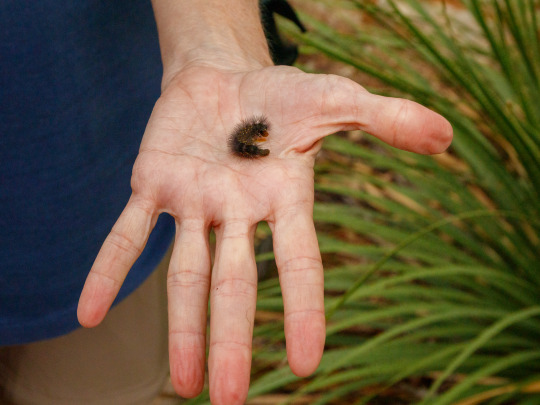
Valerie Bugh holds a salt marsh moth caterpillar (Estigmene acrea) in her hand.
But it’s a social occasion as much as anything, and the bug hunters talk among themselves around me, catching up on their lives. Two have just returned from African vacations and are excited to dish about all the great wildlife photos they got there, documenting large predatory wild beasts. But they seem just as eager to capture the living world’s small inhabitants in their lenses, too.
“It’s an insect safari,” said volunteer Katherine Baker, who told me she relished the challenge of macro photography after over a decade of experience in more general nature photography. She’s been helping count the fauna for about four years now, and always feels among kindred spirits here. But they all orbit around Valerie, returning to her for advice or an ID after wandering off.

Every Thursday for 13 years, naturalist and author Valerie Bugh, far left, has led volunteers in counting and photographing animals at the wildflower center.
“Her knowledge surpasses everyone … she’s just amazing,” Baker said of Bugh.
The gray morning clouds are starting to burn off. As it warms up, the butterflies and others will begin to emerge from the foliage where they’re resting during the rainy, humid part of the day.
“Aha, here’s where the bumblebees are,” Bugh declares with delight as some are pointed out to her. “These are workers and look how docile they are, they’re barely moving.”
Even before the sun appears, I become aware of how the plants around us are full of life, more than first appears to the untuned eye. As I start looking at one insect, like the predatory leafhopper assassin bug (Zelus renardii), a leggy, long-bodied, hungry thing with a venomous proboscis, I spot another, smaller bug crawling along the same bit of wild grass. We allow ourselves to forget in our day-to-day lives, but insects are all over, constantly surrounding and outnumbering us.
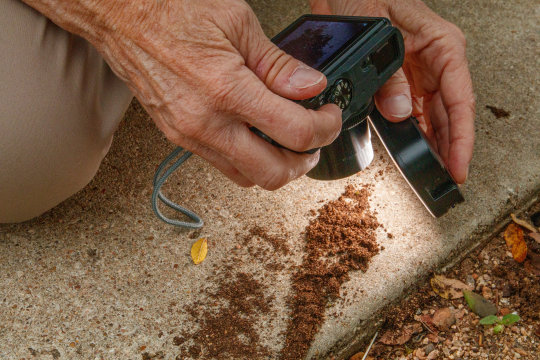
Valerie Bugh shines a small LED light on an insect.
On the day we visited, the team spotted seven different kinds of grasshoppers, two types of katydids and one cricket. Hunters often spot the American bumblebee, Bombus pensylvanicus, which is thriving in Central Texas even as its numbers dwindle elsewhere. But lately, its Sonoran cousin (Bombus sonorus) has been showing up more and more in the bug counts.
“That doesn’t bode well for desertification,” Bugh told me. “We’ve had a lot of Western species moving in, birds too, which means the habitat is great for them and a little drier than we’re used to for everyone else.”
The naturalist bug hunters are strongly aware of the harm climate change has brought on our region, and there’s a bittersweet feeling to parts of the morning, a subtle sense that someday soon could be the last day one of these fauna appear in a count.
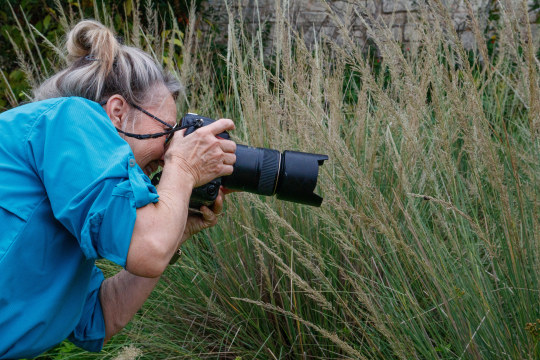
“The ecosystems are moving east, including tornado alley. It’s not great for the people in the way, and not great for us on the edge of deserts. Think of Austin without any trees. I really like trees,” Bugh says wistfully.
But most insects still spark joy when she spots them. As sure as falling leaves, the appearance of the scorpion flies (which are neither scorpions nor flies) represents the start of true Texas autumn, and they were just putting in their first appearances that Thursday in November.

Bugh can identify a great number of creatures on sight, but sometimes enlists help from collaborative internet forums and apps, or even, in one case, a book of Central American insects published in 1900.
Later, when I come home from the center, I pore over her very detailed homepage, which features a searchable spreadsheet of every creature identified by her team since 2010. I email Bugh to ask what changes she’s noticed over time.
“It is very hard to compare the past to the present since it is short term in geological time but very long term for humans,” she writes back. “Who can say what they’ve learned in over a decade? I bet it is a lot.”
#Austin#Texas#wildflowers#native plants#lady bird johnson#bugs#insects#photography#macro photography#wildlife#wildlife photography#fauna#science#entymology
2 notes
·
View notes